It's Christmas time for sure, but I wasn't expecting such generous gifts as were recently given by ST, including (pictured below) a Nanjian tuocha from the 1980s. What better way to get into the festive spirit than with some delightful tea given by a friend?
Prior to 1998, Nanjian made tuocha since their founding in 1983, sited not a million miles away from that mightiest of tuocha manufacturers, Xiaguan.
ST notes that this tuocha is a mixture of shengpu and shupu. He has owned it for nearly ten years, which makes it real treasure among teas...
ST notes that this tuocha is a mixture of shengpu and shupu. He has owned it for nearly ten years, which makes it real treasure among teas...
Shown above and below, the copper-coloured tips mixed with fragments of small leaves remind me of shupu, and the aroma is a distant, gentle woodiness. ST has stored it well, and the compression is relaxing a little as it begins to breathe.
Greeted with a rich, red soup, the aroma is surprising: while it has the smooth cedarwood nature of well-matured shupu, there is an undercurrent of direct sweetness, which explodes in the lengxiang [cool-scent, the aroma in the aroma cup as the cup cools] giving a strong caramel character. This must be the shengpu speaking. That lengxiang endures, giving me confidence that the leaves have not been aged into nothingness (as so often occurs with some old maocha), but rather that they retain their vigour.
The soup itself is a creamy, cedarwood affair, with the particulate nature I associate with shupu. As with some of those fine old shupu bing that we rescued from my wife's home-town, this is extraordinarily smooth, like thin silk.
The shengpu wraps itself around the consistent shupu core to provide some depth and challenge, swelling in the throat to a crescendo of sweetness and mouth-watering vanilla. It's quite a work-out.
The shengpu wraps itself around the consistent shupu core to provide some depth and challenge, swelling in the throat to a crescendo of sweetness and mouth-watering vanilla. It's quite a work-out.
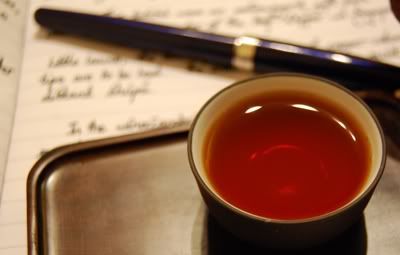
My eyes are opened, and the cold, wintery morning suddenly seems excessively bright. I drink this into mid-morning, then pack the weary leaves into a container to take to my office, where they undergo some hour-long infusions to coax out any remaining flavour and chaqi.
Well, then, time to depart for "The Other Place" (Cambridge) for a family Christmas. Special thanks to ST for such a charming gift, and my best wishes to all readers for the coming Christmas period. Make it a good one.
Well, then, time to depart for "The Other Place" (Cambridge) for a family Christmas. Special thanks to ST for such a charming gift, and my best wishes to all readers for the coming Christmas period. Make it a good one.

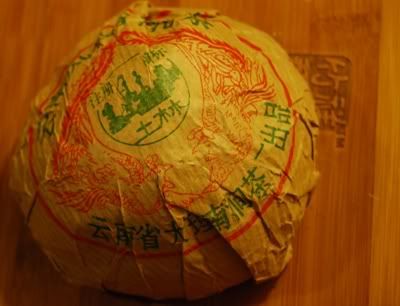

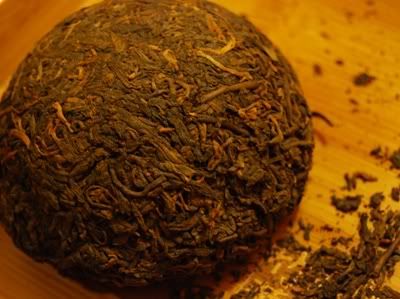
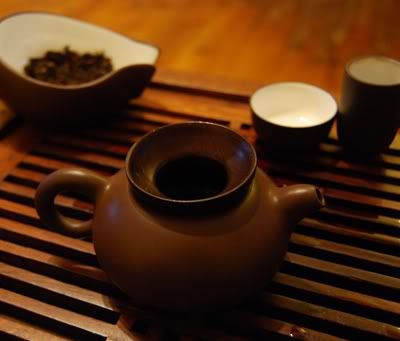
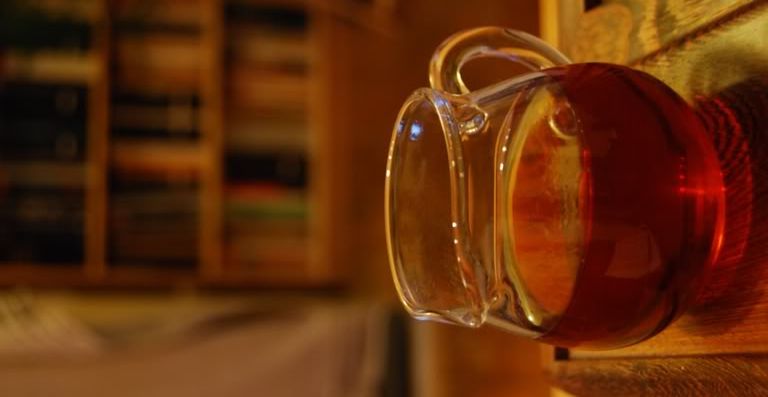
Merry Christmas :)
ReplyDeleteHave a blessed Christmas and thanks for the wonderful blog with all the beautiful pictures. :)
ReplyDelete--ST
Merry Christmas!!!
ReplyDeleteThanks for the great blog!
cheers,
Steve
Thanks chaps! Same to you!
ReplyDeleteToodlepip,
Hobbes
Hello: Thanks so much for your informative blog! Here is a quick request (from one academic to another): could you perhaps provide a short glossary of major terms (shengpu, shupu, etc.), or a link to a gơod on-line glossary from some other source? I am a novice tea connoisseur (yes, I know that's an oxymoron), so learning the definitions is key for me.
ReplyDeleteAll best for a healthy anno domini 2009.
-- Paul in Wisconsin
Dear Paul,
ReplyDeleteYour words are greatly appreciated! For a glossary of terms, there is none better than the mighty Babelcarp. It's a great repository of information for all things tea, not just pu'er.
Toodlepip,
Hobbes